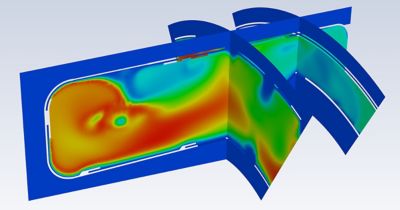-
-
Kostenlose Software für Studierende
Ansys unterstützt die nächste Generation von Ingenieur*innen
Studenten erhalten kostenlosen Zugang zu erstklassiger Simulationssoftware.
-
Verbinden Sie sich jetzt mit Ansys!
Gestalten Sie Ihre Zukunft
Stellen Sie eine Verbindung mit Ansys her, um zu erfahren, wie Simulation Ihren nächsten Durchbruch vorantreiben kann.
Länder und Regionen
Kostenlose Demoversionen
Produkte & Dienstleistungen
Lernportal
Über das Unternehmen
Back
Produkte & Dienstleistungen
Back
Lernportal
Ansys unterstützt die nächste Generation von Ingenieur*innen
Studenten erhalten kostenlosen Zugang zu erstklassiger Simulationssoftware.
Back
Über das Unternehmen
Gestalten Sie Ihre Zukunft
Stellen Sie eine Verbindung mit Ansys her, um zu erfahren, wie Simulation Ihren nächsten Durchbruch vorantreiben kann.
Kostenlose Demoversionen
ANSYS BLOG
June 14, 2023
Hit the “I Believe” Button for Digital Transformation
The aerospace and defense (A&D) industry was one of the first to embrace computer-aided engineering (CAE), but it has since acted slowly to expand digitalization efforts. For example, a recent survey of 50 A&D executives revealed that 85% of them plan to adopt digital thread technology1, but only 5% have actually deployed solutions so far. Stepping forward into digital transformation will help these companies solve many of their challenges faster and at lower cost, delivering products to market sooner. So, it’s worth asking the question: Why haven’t they taken this step earlier?
One potential answer comes from a meeting I had with an A&D executive a few years ago. After a 45-minute presentation making our case to transform his department using digital engineering, he pointed to a coaster on his desk.
"See this? That's the ‘I believe’ button.” He paused to make sure we understood. “I can't hit it. I just can't hit it. Help me hit it."
He suggested the next step.
"You need to work with my chief engineer and convince him,” he said. “You convince him, you convince me — and then I can hit that button."
In the immediate moment, this roadmap was simple enough to follow. But that conversation also reveals the deeper truth: For many A&D organizations, the value of digital engineering is still not intrinsically accepted. Our challenge, then, is as plain as it is bold. We must show an entire industry that when it comes to digital engineering, they should always hit that button.
Affecting Change in A&D
To change the way A&D organizations see digital engineering, it’s not as simple as getting chief engineers and top executives on board. There must also be acceptance from the bottom up — and that’s not easy to achieve. For example, engineers with lots of experience building and testing prototypes may need some convincing that digital engineering can improve the efficiency of such rigorous processes.
In the short term, simulation solutions must meet engineers where their problems are. As you’ll read in this issue, one such place that now “believes” in digital engineering is the Air Force Test Center (AFTC). The engineers at AFTC were struggling with repetitive flight tests that were costing them excessive time and money. To qualify, their tests require exacting flight conditions, which — no surprise — cannot be assured in the natural world. These constraints, which could change at any time, mid-flight, were forcing AFTC to scrap test data and repeat flights.
Ansys is helping AFTC to overcome these obstacles with a model-based process that improves test effectiveness, optimizes real-world test plans, and provides insight into potential design improvements. This approach — fusing test data with models — is attractive to the engineers at AFTC because it directly improves their effectiveness.
There is much more to be said about changing the way that A&D organizations see digital engineering. The future of this discipline is almost certain to extend into university systems and change the very way that aerospace engineers are educated. But this industry cannot wait for the workforce of tomorrow, because there’s so much that must be done today.
The Challenges We Face
Digital engineering holds enormous potential for efficiency and innovation across all the great initiatives now before A&D organizations. Let’s take a quick survey:
Sustainability
Global passenger traffic is expected to return to 2019 levels by 2024, and then double them by 2040 — from 4 billion passengers to about 8 billion.2 So, aircraft OEMs are investing in more fuel-efficient aircraft to reduce operating costs while emitting lower or zero emissions. A&D companies aim to reduce greenhouse gas emissions by more than 50% by 2030.1 To achieve this goal, they’re considering an array of new technologies from alternative fuels to propulsion systems such as hybrid-electric, electric, and hydrogen. The us of hybrid-electric propulsion extends beyond sustainability, as evidenced by recent news of a next-generation engine for stealthy drone design using this propulsion technology.3

Autonomy
Hundreds of organizations are working on more than 700 electric vertical takeoff and landing (eVTOL) concepts and designs.4 They are using simulation to improve autonomous flight controls, electronic data sensors, and signal processing to avoid crashes. In addition, collaborative combat aircraft (CCA), like the autonomous unmanned combat air vehicle (UCAV), must be able to interact with crewed and uncrewed aircraft.
Spectrum
In an increasingly integrated world, the ability to sense and communicate among multiple systems in a contested environment — and to quickly analyze and decide on the incoming data — is paramount. The Department of Defense’s strategy is called Joint all Domain Command and Control (JADC2, see page 48), which requires resilient radio frequency and optical communications, accurate imaging and sensor systems, artificial intelligence/machine learning (AI/ML), and more.
Speed
The U.S. Air Force is funding development for supersonics, including a strategic partnership with Boom Supersonic to accelerate the supersonic capabilities of Overture, the company’s commercial aircraft. NASA and Lockheed Martin are developing the X-59 QueSST, an experimental supersonic aircraft, which will provide regulators with the information required to establish an acceptable commercial supersonic noise standard. Equipped with such a standard, we will be able to lift the current ban on commercial supersonic travel over land in the United States.1
Space
Private businesses now account for about 80% of the $447 billion (2020 value) worldwide space industry.5 In the first half of 2022, 72 rockets launched 1,022 spacecraft,6 and 94% of these launches were commercial ventures.1
The future holds large constellations of small satellites, the need to reduce space debris, low Earth orbit (LEO) development, and increased in-orbit manufacturing. Other opportunities include reusable launch systems with renewable or non-toxic fuels, asteroid mining, security and resilience in the face of cyberattacks, accurate sensor technology for detection and tracking, space tourism, and space-based solar power.

Presenting the Proof
The most powerful evidence is, of course, empirical evidence. Where is our proof? Well, some of it is in the latest edition of Ansys Advantage magazine. This issue of Ansys Advantage is dedicated to telling the stories of A&D organizations that have committed to digital engineering to transform new product development and operations. We talk about their goals, their challenges, their struggles, and ultimately, how digital engineering has been instrumental to their success. We hope these stories might help you to hit the “I believe” button.
References
- Deloitte. "2023 Aerospace and Defense Industry Outlook."
- International Air Transport Association (IATA). "Global Outlook for Air Transport Sustained Recovery Amidst Strong Headwinds."
- Breaking Defense. "General Atomics developing hybrid-electric engine for stealthy ‘MQ-Next’ drone design."
- Electric VTOL News. "Vertical Flight Society Electric VTOL Directory Hits 700 Concepts."
- Washington Post. "Companies are commercializing outer space. Do government programs still matter?"
- Fortune. "Space travel is heating up — and so are rocket fuel emissions. These companies are developing cleaner alternatives to protect earth first."